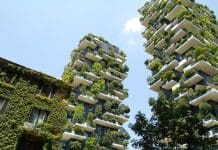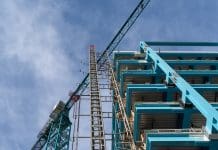To cope with a changing climate, buildings need “pre-hab”, argues Oliver Neve, management consultant at Ramboll
Maybe it’s part of getting older, but I seem to be picking up a few irritating injuries these days. Maybe I’m operating outside of my safe boundaries? Often, it can be linked back to insufficient resilience to a change in my environment, meaning I need to get stronger to avoid these injuries. Similarly, injuries are playing out in the built environment. With climate change, we’re seeing overheating of buildings, flooding, wildfires, wind damage; the list goes on.
Combatting climate change in the built environment
In the face of escalating global temperatures and the evident impacts of climate change, the built environment, including businesses and households, must adopt regenerative design principles to fortify themselves against the evolving threats posed by extreme weather events. As of writing, another month September 2023 was the hottest on record globally, a testament to the alarming trend of rising temperatures.
In order to protect ourselves, we need to become more resilient but also look to do more good rather than just less harm. This is where regenerative design comes in, a topic that may not capture the attention of the construction industry and public beyond carbon tunnel vision.
Regenerative design in the built environment is about creating spaces that sustain and actively contribute to the health of our planet and communities. It goes beyond minimising harm; it seeks to restore and revitalise ecosystems. The goal is to build in a way that gives back to the environment, making our living spaces more sustainable, resilient and beneficial for both people and the planet.
How can we have a regenerative design against heatwaves in the built environment?
A pivotal step in climate mitigation is the reduction of carbon emissions, and within the built environment, a notable contributor is the energy demand from air conditioning during heatwaves.
Rather than exacerbating the problem, good design should embrace regenerative measures to naturally cool spaces, reducing the need for a key facet of regenerative design: integrating vegetation into urban landscapes. For example, paved driveways, a common sight across the UK, contribute to the urban heat island effect and surface water runoff.
Encouraging the transformation of these spaces through rewilding of drives and introducing trees into a city’s streetscape not only mitigates these issues but also addresses the critical concern of biodiversity loss, creating a more sustainable and resilient built environment.
Another aspect of regenerative design is biomimicry. Take the butterfly’s wings, for example, that open and close to thermoregulate it. External shutters on a building can do the same. Shutters are a sight rarely seen in the UK but in Lille, where the climate is almost identical to London’s, we see the widespread use of external shutters to protect against the heat gains of the summer sun.
These can be discreet mechanical roller shutters mounted under the window eaves or traditional folding shutters on the façade. Yet, external shading is almost non-existent in housing stock within London.
Insulation, like a fur coat, is a fundamental aspect of building design, taking on renewed importance in the face of climate extremes. Beyond its role in reducing energy demand for heating, insulation becomes a key strategy for maintaining comfortable temperatures within buildings during hotter (and cooler) periods.
Predictions from the World Meteorological Organisation underscore the urgency of a proactive approach within the built environment. The likelihood of global temperatures exceeding 1.5C above pre-industrial levels emphasises the need for resilience in building design.
My own personal injury experience and inadequately regulated internal environments both serve as a reminder that a reactive stance is insufficient. Sustainability within the built environment requires proactive measures to manage and adapt to a rapidly changing climate to avoid the tragic loss of life of those most vulnerable.
Like prehab in fitness, a focus on pre-emptive actions for the built environment is paramount to ensure structures are equipped to withstand the challenges posed by climate change.
Oliver Neve
Management consultant
Ramboll
Tel: +44 (0)1223 321195









![[VIDEO] UK-based firm reveals ‘world’s first’ fully AI-driven architectural project Studio Tim Fu has revealed the 'world's first' fully AI-driven architectural project in Slovenia, developing six luxury villas on the Lake Bled Estate](https://www.pbctoday.co.uk/news/wp-content/uploads/2025/03/Interior-1-studio-tim-fu-218x150.gif)




